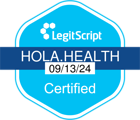What causes pain in the Right Lower Quadrant (RLQ)
Your RLQ, tucked under an invisible line from your belly button to your right hip, is where parts of your colon, your lower kidney, and in women, the right ovary and fallopian tube sit. Pain here can be as mild as a nuisance or as severe as a red flag, making it a tricky puzzle to solve.A closer look at causes in women
- Ovarian cysts: Ovarian cysts are little sacs filled with fluid that can form on or inside the ovaries. While most of the time they go unnoticed, they can occasionally twist or rupture, which leads to sudden, intense pain in the right lower quadrant (RLQ). This can be an unsettling scenario with pain, nausea, and dizziness. Hormonal imbalances can often trigger cysts, but luckily, they usually resolve on their own. If complications arise, like ovarian torsion (where the cyst twists and cuts off blood supply), ultrasound imaging helps confirm the diagnosis. Treatment can range from simple pain relief to surgical removal, depending on the severity.
- Endometriosis: Imagine your body planting tissue meant for the uterus in all the wrong places. That’s what happens with endometriosis. The uterine-like tissue often spreads to the ovaries, fallopian tubes, and pelvic cavity, causing inflammation and scar tissue. Pain can occur in the RLQ if the right ovary or surrounding pelvic structures are affected. The condition often leads to chronic cramping, especially during menstruation. Managing endometriosis might require hormonal therapy or surgical intervention, along with strategies for pain management.
- Pelvic Inflammatory Disease (PID): PID is often triggered by sexually transmitted infections like chlamydia or gonorrhoea. If left untreated, it can lead to infertility or chronic pelvic pain. Women with PID can experience intense abdominal pain, fever, unusual discharge, and discomfort during intercourse. Antibiotic treatment is crucial to stop the infection. Partners should also be treated to prevent reinfection.
- Ectopic pregnancy: An ectopic pregnancy is a serious situation where a fertilised egg implants itself outside the uterus, typically in a fallopian tube. This can lead to severe RLQ pain, particularly if the right tube is affected, and it's often accompanied by vaginal bleeding and dizziness. It's a medical emergency requiring immediate attention to prevent potentially life-threatening complications.
- Ovulation pain (Mittelschmerz): Mittelschmerz, or ovulation pain, is a German term meaning "middle pain," describing the mild cramping or discomfort some women feel around the middle of their menstrual cycle. Depending on which ovary releases the egg, the pain typically strikes one side of the lower abdomen. It is harmless and fleeting and usually lasts only a few hours to a few days.
What About Men?
- Inguinal hernia: An inguinal hernia is where a portion of the intestine or abdominal tissue pushes through a weak spot in the abdominal muscles, creating a noticeable bulge. It ranges from a dull ache to sharp pain, particularly during activities like lifting or bending. Often more visible when standing up, the hernia may cause a burning sensation. Surgery is required to repair the weakened wall and keep the bulge from recurring.
- Epididymitis: Epididymitis, or inflammation of the epididymis (the coiled tube at the back of the testicle), can cause pain starting in the scrotum and radiating to the RLQ. It often results from bacterial infections or sexually transmitted diseases. Accompanied by fever and painful urination, it requires antibiotics, bed rest, ice packs, and anti-inflammatory meds.
- Appendicitis: Appendicitis starts with a dull ache around the belly button before it moves down to the RLQ, becoming sharper and more intense as nausea, vomiting, and fever accompany the pain. Swift surgical removal is crucial to prevent a ruptured appendix and the subsequent complications.
- Testicular torsion: When the spermatic cord twists and cuts the blood flow to the testicle, testicular torsion causes sudden, severe pain in the scrotum that can radiate to the RLQ, along with nausea, vomiting, and swelling. Time is of the essence, and surgery is required within hours to save the testicle.
- Muscle strain: Heavy lifting, sports, or sudden movements can lead to muscle strains in the abdomen or groin area. This results in mild to moderate pain in the RLQ, which worsens with movement or stretching. Rest and over-the-counter pain relievers usually do the trick.
When should you worry about right-side pain?
It's tempting to brush off stomach pain as a minor hiccup, but there are times when it screams for attention:- A sudden, sharp pain that feels more localised and knife-like
- Pain associated with fever, nausea, vomiting, or a change in bowel habits.
- The yellow flag of jaundice.
- Pain that persists for 24-48 hours or gets worse.
Home Remedies to try
If your pain is more annoying than alarming, here are a few tricks to try at home:- Warm compress: A heating pad or warm compress can work wonders by relaxing tense muscles and improving blood flow. Applying it for 15-20 minutes at a time relieves cramps, digestive discomfort, or muscle strains.
- Hydration: Staying hydrated is key, especially if nausea, diarrhoea, or vomiting is involved. Clear fluids like water, herbal teas, or electrolyte-rich drinks replenish lost electrolytes and soothe the stomach.
- Over-the-counter medications: NSAIDs like ibuprofen can help tame mild to moderate pain by reducing inflammation. Antispasmodics may ease cramping, while antacids can bring relief from indigestion.
- Dietary adjustments: Stick to small, frequent meals with easy-to-digest foods like bananas, rice, and toast to calm an upset stomach. Avoid fatty, spicy, or acidic foods, and turn to ginger or peppermint tea for nausea and bloating.
- Gentle exercise: Light physical activity like walking or stretching can aid digestion and reduce stress, helping with RLQ discomfort. Yoga or gentle stretching can also ease menstrual cramps and boost blood flow.
When to consult a doctor?
If your RLQ pain lingers longer than several hours or escalates, it would be advisable to consult your GP. Seek medical help immediately if you're ticking off those serious symptom boxes.Can a telehealth appointment with an online doctor help with abdominal aches on the right side?
A telehealth call is like the express lane for figuring out if you need to head to the ED or just keep an eye on things from the comfort of your couch. So yes, a telehealth appointment will help with abdominal aches on the right side and its causes. Conclusion Occasional RLQ pain isn't usually a red flag, but staying clued in on what it could mean is your best defence against letting simple issues spiral into serious ones. Tuning into your body’s signals and taking swift action can be the difference between a quick fix and a major ordeal.
Consult an Online Doctor in 15 mins










 Facebook
Facebook Instagram
Instagram LinkedIn
LinkedIn



